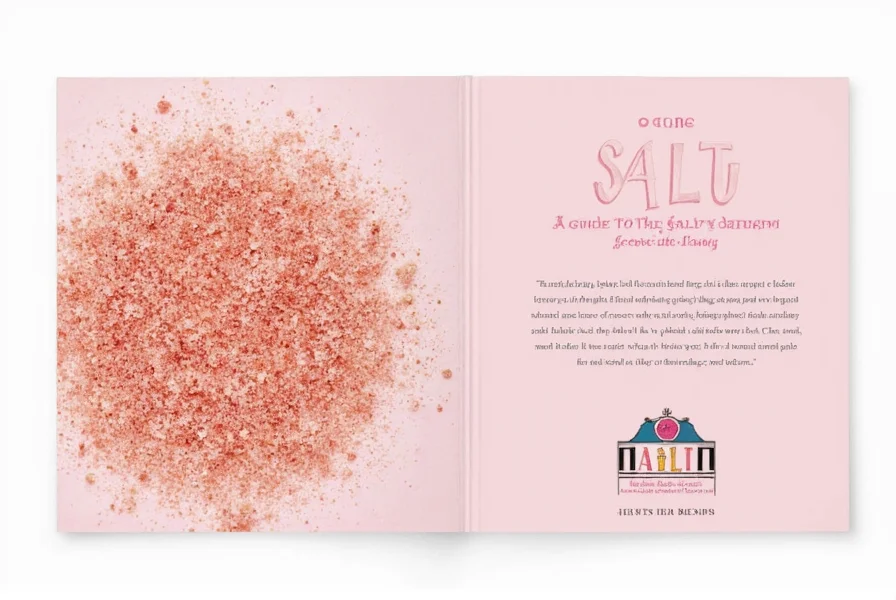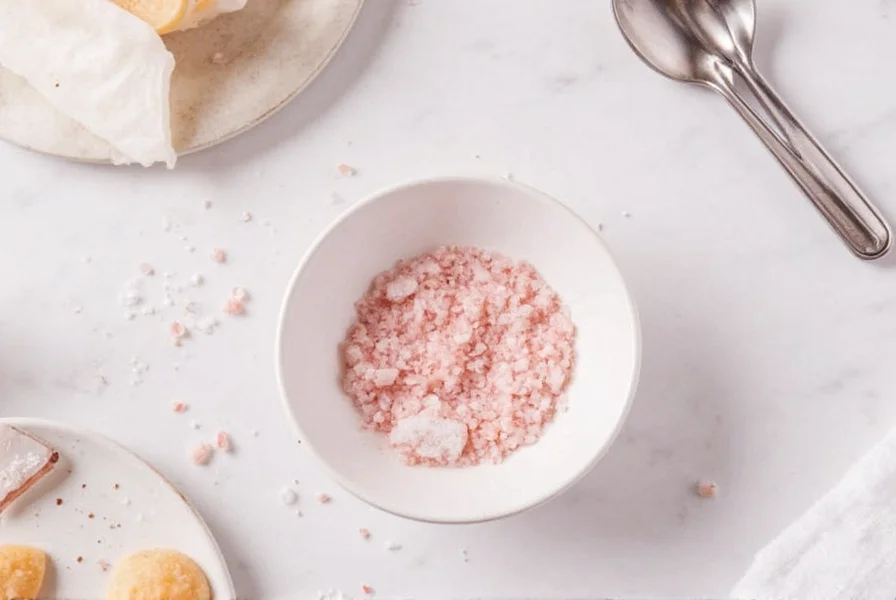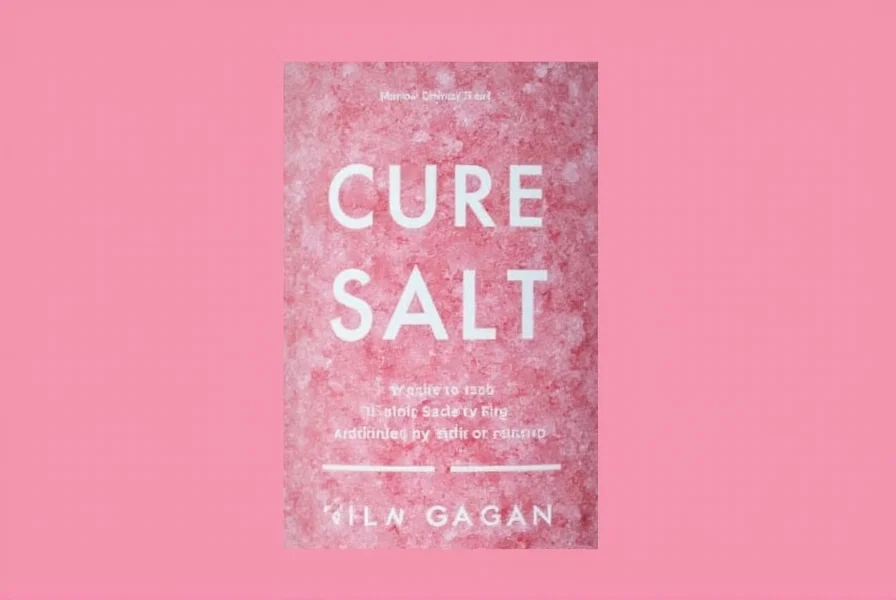Table of Contents
Introduction to Pink Cure Salt
According to the U.S. Food and Drug Administration (FDA) and the U.S. Department of Agriculture (USDA), pink cure salt is a critical ingredient for safely curing meats. It contains sodium nitrite (typically 6.25%) mixed with regular salt and a small amount of pink dye for identification. This compound prevents the growth of harmful bacteria like Clostridium botulinum, which causes botulism—a potentially fatal illness. This guide provides science-backed information on safe usage, dosage, and safety precautions based on official FDA and USDA guidelines.

Why You Should Care About Pink Cure Salt
For meat curing, pink cure salt is not optional—it's essential for food safety. The FDA and USDA emphasize that using regular salt instead of curing salt for meat preservation can lead to botulism outbreaks. Here are critical reasons why pink cure salt matters:
- Botulism Prevention: The FDA states that sodium nitrite in curing salts inhibits Clostridium botulinum growth, which thrives in low-oxygen environments like cured meats.
- Regulatory Compliance: USDA Food Safety and Inspection Service (FSIS) requires curing salts for certain meat products to meet federal safety standards.
- Color and Flavor: While aesthetic, the pink color is a visual indicator of proper curing. The FDA confirms this color change confirms nitrite reaction with meat myoglobin.
- Shelf Stability: Curing salts extend safe storage time for refrigerated and dry-cured meats per USDA guidelines.

How to Use Pink Cure Salt in Cooking
The FDA and USDA provide strict guidelines for safe pink cure salt usage. Always follow these steps precisely:
- Measure Accurately: Use a digital kitchen scale. The FDA recommends 0.06% sodium nitrite by meat weight (1 teaspoon per 5 pounds of meat for most applications).
- Follow Official Ratios: USDA FSIS guidelines specify:
- For fresh sausages or bacon: 1 tsp per 5 lbs meat
- For dry-cured products: Use Prague Powder #2 per USDA standards
- Never Substitute: The FDA warns that using regular table salt instead of curing salt creates botulism risk. Sodium nitrite is irreplaceable for pathogen control.
- Refrigerate Properly: USDA requires curing meats at 38-40°F (3-4°C) during the process to prevent bacterial growth.
Important: Always wash hands after handling pink cure salt. Store it separately from regular salt to prevent accidental misuse—this is a critical FDA safety recommendation.
| Curing Salt Type | Ingredients | Uses | Regulatory Guidance |
|---|---|---|---|
| Pink Cure Salt (Prague Powder #1) | 6.25% sodium nitrite + 93.75% sodium chloride | Bacon, ham, sausages (cooked or smoked within 30 days) | USDA FSIS requires for cured meats with short processing times |
| Prague Powder #2 | 6.25% sodium nitrite + 0.5% sodium nitrate + 93.25% sodium chloride | Dry-cured meats (salami, prosciutto, long-term curing) | USDA FSIS specifies for products requiring extended curing periods |
| Regular Table Salt | 100% sodium chloride | Seasoning only | FDA explicitly prohibits for meat curing due to botulism risk |
As confirmed by USDA FSIS, Prague Powder #1 and #2 are the only curing salts approved for food safety in commercial and home curing. Regular salt cannot substitute for either type.
Buying Guide for Pink Cure Salt
Top Features to Look For
- FDA-Approved Labeling: The product must clearly state "sodium nitrite" content (6.25%) and include "For Curing Meats Only" warnings per FDA regulations.
- USDA Compliance: Look for products manufactured in USDA-inspected facilities. Check for establishment numbers on packaging.
- Clear Dosage Instructions: Reputable brands follow FDA guidelines for measurement instructions (e.g., "1 tsp per 5 lbs meat").
- Distinctive Packaging: FDA requires pink color and "Do Not Consume Directly" warnings to prevent accidental misuse.
Recommended Products
- US Wellness Meats Pink Curing Salt: FDA-approved, USDA-inspected, and labeled with clear safety warnings. Ideal for home curing with precise measurements.
- Butcher & Packer Pink Curing Salt: Meets all FDA and USDA requirements for commercial and home use. Contains no additives beyond sodium nitrite and salt.
- Spice Garden Pink Curing Salt: Compliant with FDA regulations for food safety. Specifically formulated for dry-cured applications per USDA standards.
Use Cases and Target Audience
- Home Cooks: Choose products with clear FDA-compliant labeling. Butcher & Packer is recommended for beginners due to its straightforward usage instructions.
- Professional Chefs: US Wellness Meats is preferred for commercial kitchens as it meets all FDA and USDA requirements for food service establishments.
- Dry-Cured Meat Producers: Spice Garden is formulated specifically for USDA-compliant dry-curing processes.
Always verify product compliance with FDA 21 CFR 172.175 and USDA FSIS guidelines before purchasing. Non-compliant products may pose serious health risks.
Frequently Asked Questions About Pink Cure Salt
What is the difference between pink cure salt and regular salt?
According to the FDA, pink cure salt contains 6.25% sodium nitrite mixed with regular salt and a pink dye for identification. Regular table salt is pure sodium chloride with no preservative properties. The FDA emphasizes that using regular salt for meat curing creates botulism risk, as sodium nitrite is required to inhibit Clostridium botulinum growth.
Is pink cure salt safe to use in food preparation?
Yes, when used according to FDA and USDA guidelines. The FDA states that sodium nitrite in precise small amounts (0.06% of meat weight) is safe and necessary for preventing botulism in cured meats. However, exceeding recommended amounts can cause methemoglobinemia ("blue baby syndrome") and is toxic. Always follow official dosage instructions.
How much pink cure salt should I use per pound of meat?
The FDA and USDA specify 1 teaspoon of pink cure salt per 5 pounds (2.27 kg) of meat for most applications. Never exceed this ratio. For precise measurements, use a digital scale: 0.06% sodium nitrite by meat weight. Volume measurements (teaspoons) are less accurate than weight measurements.
Can I use pink cure salt for all types of meat curing?
No. The USDA FSIS distinguishes between two types:
- Prague Powder #1 (pink cure salt) for meats cooked or smoked within 30 days
- Prague Powder #2 for dry-cured meats requiring extended curing periods
What happens if I use too much pink cure salt?
The FDA warns that excessive sodium nitrite can cause methemoglobinemia, which reduces oxygen delivery in blood. In severe cases, it can be fatal. The FDA states that concentrations above 0.1% of meat weight are dangerous. Always measure precisely and never substitute regular salt measurements for curing salt.
How should I store pink cure salt?
USDA FSIS requires storing pink cure salt in its original container with a tight lid, in a cool, dry place away from children and pets. It must be clearly labeled and separated from regular salt. The FDA confirms proper storage maintains effectiveness for 1-2 years, but always check expiration dates.
Is pink cure salt the same as Prague powder?
Yes. The FDA and USDA refer to it as "Prague Powder" in official documents. There are two types:
- Prague Powder #1 (for short-term curing)
- Prague Powder #2 (for long-term dry curing)
Can I make cured meats without pink cure salt?
The USDA FSIS explicitly states that curing salts containing sodium nitrite are required for safe meat curing. Traditional salt-only curing cannot prevent botulism in low-acid, low-oxygen environments. For refrigerated cures or meats not reaching safe internal temperatures during cooking, pink cure salt is non-negotiable for food safety.
Conclusion
In summary, pink cure salt is a critical food safety ingredient for meat curing, not merely a seasoning. The FDA and USDA mandate its use to prevent botulism—a potentially fatal illness. This guide provides science-backed information to ensure safe usage according to official guidelines.
Always remember:
- Never substitute regular salt for curing salt
- Measure precisely using a digital scale
- Use the correct type (Prague Powder #1 or #2) for your curing process
- Store safely away from children and regular salt
By following these FDA and USDA recommendations, you can safely enjoy cured meats while eliminating botulism risks. For more information, consult the FDA's 21 CFR 172.175 and USDA FSIS guidelines directly.











 浙公网安备
33010002000092号
浙公网安备
33010002000092号 浙B2-20120091-4
浙B2-20120091-4